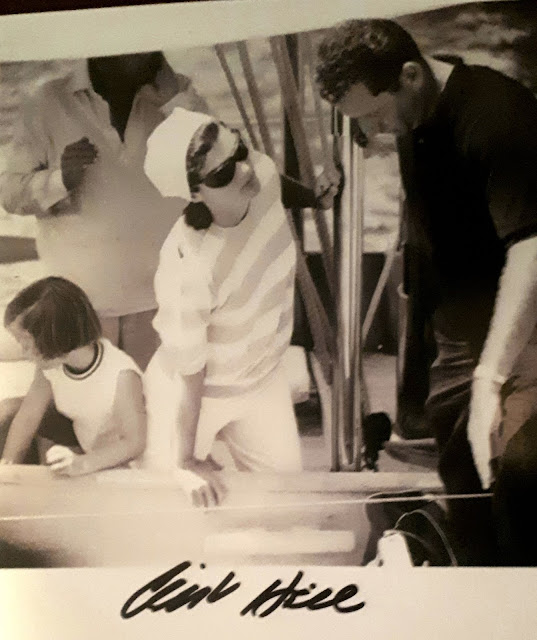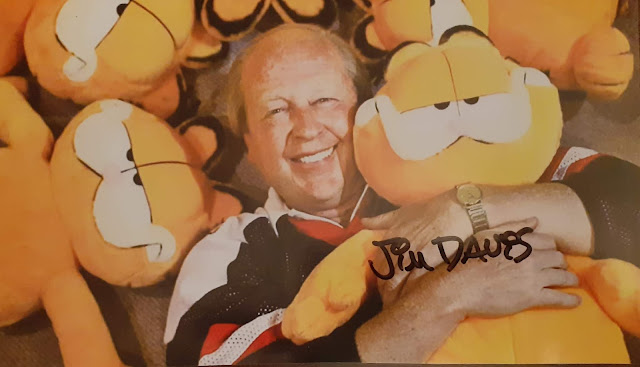Men at Work are an Australian rock band formed in 1979 and best known for their 1981 hit "
Down Under". Its founding member was
Colin Hay on lead vocals and guitar. After playing as an acoustic duo with
Ron Strykert during 1978-79, he formed the group with Ron Strykert playing bass guitar, and
Jerry Speiser on drums. They were soon joined by
Greg Ham
on flute, saxophone, and keyboards and John Rees on bass guitar, with
Ron then switching to lead guitar. The group was managed by Russell
Depeller, a friend of Colin Hay, whom he met at Latrobe University. This
line-up achieved national and international success in the early 1980s.
In January 1983, they were the first Australian artists to have a
simultaneous No. 1 album and No. 1 single in the United States
Billboard charts:
Business as Usual
(released on 9 November 1981) and "Down Under" (1981), respectively.
With the same works, they achieved the distinction of a simultaneous
No. 1 album and No. 1 single on the Australian, New Zealand, and United
Kingdom charts. Their second album
Cargo (2 May 1983) was also No. 1 in Australia, No. 2 in New Zealand, No. 3 in the US, and No. 8 in the UK. Their third album
Two Hearts (3 April 1985) reached the top 20 in Australia and top 50 in the US.
They won the
Grammy Award for Best New Artist in 1983, they were inducted into the
ARIA Hall of Fame in 1994, and they have sold over 30 million albums worldwide. In May 2001, "Down Under" was listed at No. 4 on the
APRA Top 30 Australian songs and
Business as Usual appeared in the book
100 Best Australian Albums (October 2010).
The original band line-up split in two in 1984, with Jerry
Speiser and John Rees being asked to leave the group. This left Colin
Hay, Greg Ham and Ron Strykert. During the recording of the
Two Hearts album, Ron decided to leave. Soon after the release of
Two Hearts,
Greg left also, leaving Colin Hay as the sole remaining member. Colin
Hay and Greg Ham toured the world as Men At Work from 1996, until 2002.
On 19 April 2012, Greg Ham was found dead at his home from an apparent
heart attack.
[6] In 2019, Hay revived the moniker and began touring as Men at Work with a backing band.
Origins
The nucleus of Men at Work formed in Melbourne around June 1979 with
Colin Hay on lead vocals and guitar, Ron Strykert on bass guitar, and
Jerry Speiser on drums. They were soon joined by
Greg Ham on flute, sax and keyboards, and then John Rees on bass guitar, with Ron switching to lead guitar.
[7] Hay had emigrated to Australia in 1967 from Scotland with his family.
[8]
In 1978, he had formed an acoustic duo with Strykert, which expanded by
mid-1979 with the addition of Speiser. Around this time as a side
project, keyboardist Greg Sneddon (ex-Alroy Band).
[7][9]
a former band mate of Jerry Speiser, together with Speiser, Hay and
Strykert performed and recorded the music to 'Riff Raff", a low budget
stage musical, upon which Sneddon had worked.
Hay had asked Greg Ham to join the group, but Greg had hesitated, as he was finishing his music degree.
[citation needed]
Ultimately, he decided to join the band in October 1979. John Rees, a
friend of Jerry, joined soon after. The name Men At Work was thrown into
the hat by Colin Hay, and was seconded by Ron Strykert, when a name was
required to put on the blackboard outside The Cricketer's Arms Hotel,
Richmond.
[10] The band built a "grass roots" reputation as a
pub rock band.
[7] In 1980, the group issued their debut single, "Keypunch Operator" backed by "
Down Under", with both tracks co-written by Hay and Strykert.
[7][11] It was "self-financed" and appeared on their own independent, M. A. W. label.
[8][12] Australian musicologist,
Ian McFarlane, felt the A-side was "a fast-paced country-styled rocker with a clean sound and quirky rhythm".
[7] Despite not appearing in the top 100 on the Australian
Kent Music Report Singles Chart,
[13]
by the end of that year the group had "grown in stature to become the
most in-demand and highly paid, unsigned band of the year".
[7]
International success (1981–1983)
Early
in 1981 Men at Work signed with CBS Records, the Australian branch of
CBS Records International, (which became Sony Music) on the
recommendation of Peter Karpin, the label's
A&R person.
[7][8] The group's first single with CBS Records in Australia "
Who Can It Be Now?", was released in June 1981 which reached No. 2 and remained in the chart for 24 weeks.
[13] It had been produced by United States-based Peter McIan, who was also working on their debut album,
Business as Usual.
[7][8][12]

McIan, together with the band worked on the arrangements for all the songs that appeared on
Business As Usual.
Their next single was a re-arranged and "popified" version of "Down
Under". It appeared in October that year and reached No. 1 in November,
where it remained for six weeks.
[13] Business as Usual
was also released in October and went to No. 1 on the Australian Kent
Music Report Albums Chart, spending a total of nine weeks at the top
spot.
[13] The Canberra Times'
Garry Raffaele opined that it "generally stays at a high level, tight
and jerky ... There is a delicacy about this music — and that is not a
thing you can say about too many rock groups. The flute and reeds of
Greg Ham do much to further that".
[14]
McFarlane noted that "[a]side from the strength of the music, part of
the album's appeal was its economy. The production sound was low-key,
but clean and uncluttered. Indeed, the songs stood by themselves with
little embellishment save for a bright, melodic, singalong quality".
[7]
By February the following year both "Down Under" and
Business as Usual had reached No. 1 on the respective
Official New Zealand Music Charts[15] – the latter was the first Australian album to reach that peak in New Zealand.
[7] Despite its strong Australian and New Zealand showing, and having an American producer (McIan),
Business as Usual was twice rejected by Columbia's US parent company.
[8]
Thanks to the persistence of Russell Depeller and Karpin, the album was
finally released in the US and the United Kingdom in April 1982 – six
months after its Australian release.
[8] Their next single, "
Be Good Johnny", was issued in Australia in April 1982 and reached No. 8 in Australia,
[13] and No. 3 in New Zealand.
[15]
Men at Work initially broke through to North American audiences
in the western provinces of Canada with "Who Can It Be Now?" hitting the
top 10 on radio stations in
Winnipeg by May 1982. It peaked at No. 8 on the Canadian
RPM Top Singles Chart in July.
[16] In August the group toured Canada and the US to promote the album and related singles, supporting
Fleetwood Mac.
[7][8] The band became more popular on Canadian radio in the following months and also started receiving top 40 US airplay by August.
[17] In October "Who Can It Be Now?" reached No. 1 on the US
Billboard Hot 100,
[18] while Canada was one single ahead with "Down Under" topping the Canadian charts that same month.
[16] In the following month
Business as Usual began a 15-week run at No. 1 on the
Billboard 200.
[18]
While "Who Can It Be Now?" was still in the top ten in the US,
"Down Under" was finally released in that market. It entered the US
charts at No. 79 and ten weeks later, it was No. 1.
[18]
By January 1983 Men at Work had the top album and single in both the US
and the UK – never previously achieved by an Australian act.
[7] "Be Good Johnny" received moderate airplay in the US; it reached the top 20 in Canada.
[16]
"Down Under" gained international media exposure in September
1983 through television coverage of the Australian challenge for the
America's Cup yacht trophy in September 1983 when it was adopted as the theme song by the crew of the successful
Australia II.
The band released their second album,
Cargo, in April 1983, which also peaked at No. 1 – for two weeks – on the Australian charts.
[13] In New Zealand it reached No. 2.
[15] It had been finished in mid-1982 with McIan producing again, but was held back due to the success of their debut album
[7][8][12] on the international market, where
Business as Usual was still riding high.
Cargo appeared at No. 3 on the
Billboard 200,
[18] and No. 8 in the UK. The lead single, "
Overkill", was issued in Australia ahead of the album in October 1982 and reached No. 6,
[13] it peaked at No. 3 in the US.
[18] "
Dr. Heckyll & Mr. Jive" followed in March 1983 made it to No. 5 in Australia,
[13] and No. 28 in the US.
[18] "
It's a Mistake" reached No. 6 in the US.
[18] The band toured the world extensively in 1983.


















